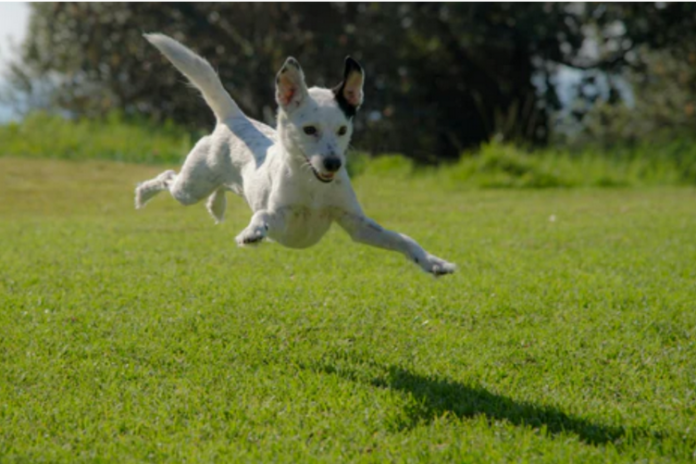As dog owners, we want our furry companions to enjoy a fulfilling life, which often includes the freedom to explore and play independently. However, it’s equally important to ensure their safety and well-being while granting them this autonomy. Balancing your dog’s desire for independence with the need for security and supervision is key to creating a harmonious and happy life for both you and your canine friend. In this article, we’ll explore strategies for fostering canine independence while prioritizing their safety.
Understanding Your Dog’s Need for Independence
Dogs are naturally curious creatures with an innate desire to explore their surroundings. Providing them with opportunities for independent play and exploration is crucial for their mental and physical well-being. Benefits of canine independence include:
- Increased confidence and self-reliance
- Improved problem-solving skills
- Enhanced physical fitness and agility
- Reduced stress and anxiety
- Stronger bond with their owners through trust and respect
By recognizing and nurturing your dog’s need for independence, you can help them develop into a well-rounded, happy, and confident companion.
Creating a Safe Environment
To allow your dog the freedom to explore independently, it’s essential to create a safe environment that minimizes potential risks. Consider the following steps:
- Secure your yard: Ensure your yard is properly fenced and free from gaps or holes that your dog could escape through. Regularly inspect and maintain your fence to keep it in good condition.
- Remove hazards: Identify and remove any potential hazards in your yard, such as toxic plants, sharp objects, or unstable structures that could cause injury.
- Provide shade and shelter: Make sure your dog has access to shade and shelter to protect them from extreme weather conditions and provide a comfortable resting spot.
- Supervise initial explorations: When introducing your dog to independent outdoor time, supervise them closely at first to ensure they are comfortable and safe in the environment.
By creating a secure and hazard-free space, you can give your dog the freedom to explore and play independently with greater peace of mind.
Training for Off-Leash Reliability
One aspect of canine independence is the ability to enjoy off-leash time in appropriate settings, such as designated dog parks or hiking trails. To ensure your dog’s safety and the safety of others during off-leash adventures, it’s crucial to train them for reliable recall and obedience. Here are some tips:
- Start with basic obedience: Teach your dog essential commands such as “come,” “stay,” “heel,” and “leave it” in low-distraction environments before progressing to off-leash training.
- Use positive reinforcement: Reward your dog with treats, praise, and play whenever they respond to your commands correctly, reinforcing the desired behavior.
- Gradually increase distractions: As your dog becomes more reliable, practice obedience commands in settings with increasing levels of distraction, such as a busy park or a trail with other dogs and people.
- Establish a strong recall: Work on building a solid recall command by calling your dog to come to you in various situations and rewarding them generously for prompt responses.
- Practice regular off-leash sessions: Once your dog has mastered off-leash obedience, provide regular opportunities for them to enjoy off-leash time in safe, designated areas to maintain their skills and confidence.
Remember, off-leash privileges should only be granted to dogs that have demonstrated a high level of obedience and recall reliability to ensure their safety and the safety of others.
Utilizing Technology for Added Security
In addition to training and creating a safe environment, modern technology can provide added peace of mind when allowing your dog more independence. Some helpful tools include:
- GPS tracking collars: These devices allow you to monitor your dog’s location in real-time using a smartphone app, making it easier to keep track of them during off-leash adventures or in case of accidental escape.
- Remote training collars: Remote training collars enable you to communicate with your dog and reinforce obedience commands from a distance, providing an extra layer of control during off-leash time.
- Wireless pet containment systems: These systems use GPS or radio frequency technology to create an invisible boundary around your property, alerting your dog with a warning tone or mild static correction if they approach the boundary limits.
While technology can be a useful aid, it should never replace proper training, supervision, and a physically secure environment. Always use these tools in combination with other safety measures and under the guidance of a professional dog trainer when necessary.
Balancing Independence and Supervision
Canine independence doesn’t mean leaving your dog unsupervised for extended periods. It’s essential to strike a balance between allowing them the freedom to explore and play independently while still providing adequate supervision and interaction. Some guidelines to follow:
- Provide daily interaction and playtime: Spend quality time with your dog each day, engaging in interactive play, training sessions, and bonding activities to maintain a strong relationship.
- Monitor their behavior: Regularly check on your dog during their independent time to ensure they are safe, comfortable, and not engaging in any destructive or harmful behavior.
- Adapt to individual needs: Each dog is unique, and some may require more supervision or guidance than others. Be attentive to your dog’s specific needs and adjust their level of independence accordingly.
- Set clear boundaries: Establish clear rules and boundaries for your dog’s independent time, such as designated play areas or off-limits zones, to help them understand your expectations and maintain their safety.
By finding the right balance between independence and supervision, you can help your dog enjoy the benefits of autonomy while still keeping them safe and connected to you.
Conclusion
Fostering canine independence is an important aspect of responsible dog ownership, as it contributes to your dog’s mental and physical well-being. By creating a safe environment, training for off-leash reliability, utilizing technology for added security, and balancing independence with appropriate supervision, you can give your dog the freedom they crave while ensuring their safety.
Remember, every dog is different, and what works for one may not work for another. Be patient, consistent, and attuned to your individual dog’s needs as you work to find the right balance of independence and safety. With love, trust, and clear boundaries, you and your canine companion can enjoy a fulfilling and harmonious life together, filled with adventure, exploration, and the joy of each other’s company.














